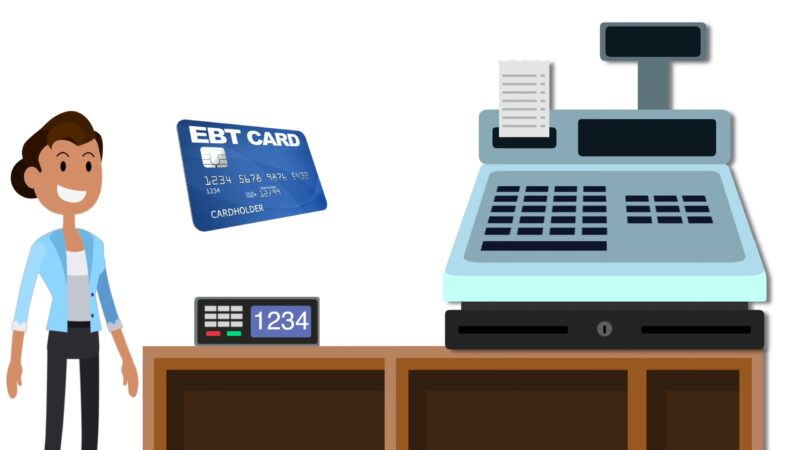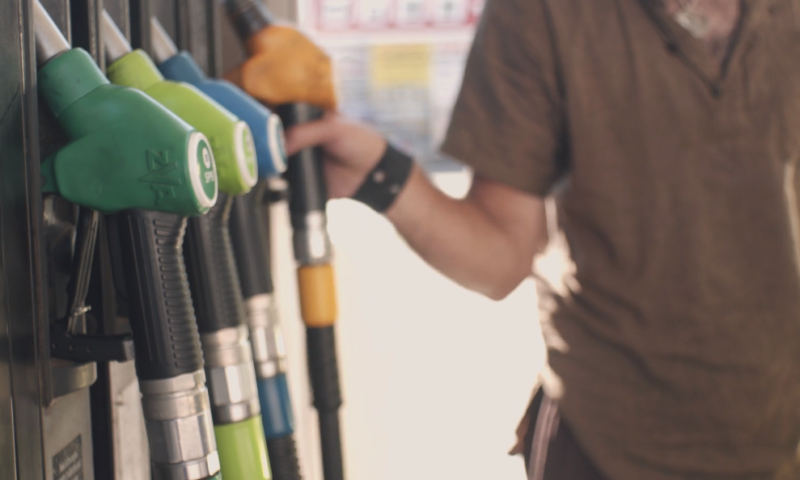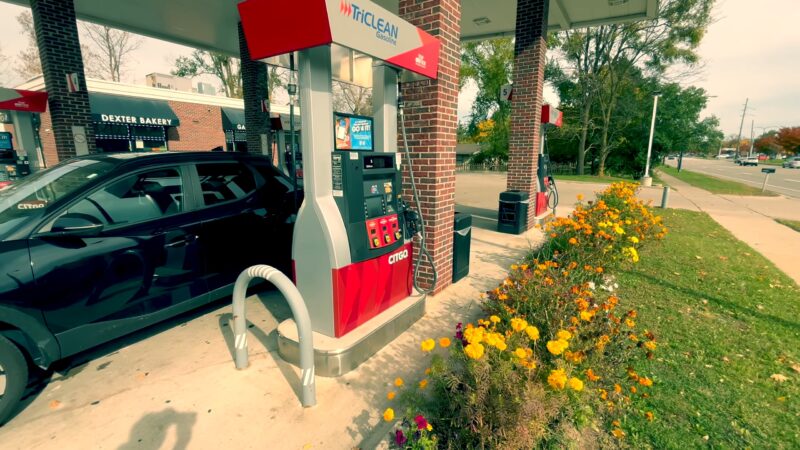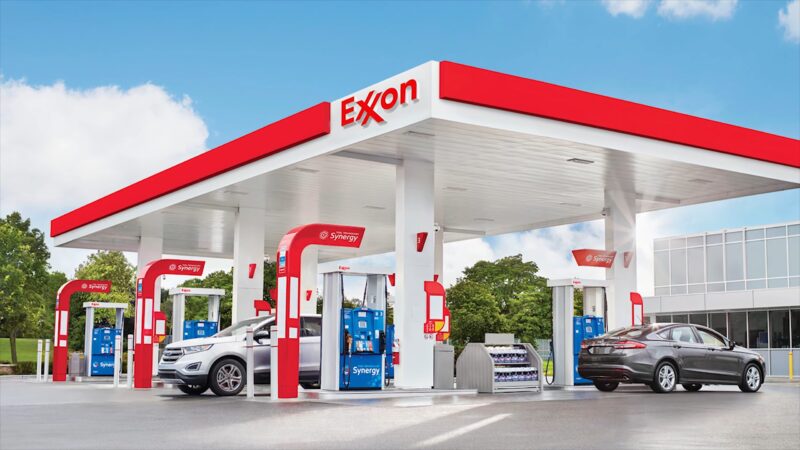With the increasing necessity for flexible payment options, gas stations across the United States are accommodating customers by accepting Electronic Benefit Transfer (EBT) cards. EBT cards are issued under the Supplemental Nutrition Assistance Program (SNAP) and other federal aid programs, enabling recipients to make cash or food stamp purchases.
Gas stations that accept EBT provide a convenient way for cardholders to purchase eligible items while on the road. This addition to payment methods aligns with the program’s objective of increasing accessibility to food and essentials for those who need financial aid.
Key Takeaways
- EBT cards from federal assistance programs can be used at participating gas stations.
- While food items are commonly eligible for EBT purchase, other uses vary by station and benefit type.
- Knowledge of item eligibility and station policy is crucial for maximizing EBT benefits.
More About EBT and Its Use in Gas Stations
Electronic Benefit Transfer (EBT) is a system that allows recipients of government benefits to pay for goods using SNAP, making it a vital part of the daily lives of many individuals.
EBT stands for Electronic Benefit Transfer, which is the electronic system that allows Supplemental Nutrition Assistance Program (SNAP) participants to pay for their food using their EBT cards. EBT cards work like debit cards, with benefits being loaded onto an account each month that can then be used to purchase eligible items.
At gas stations, the acceptance of EBT cards can vary widely. Some major chains such as Circle K, BP, and Cumberland Farms may accept EBT for eligible purchases. It’s important for cardholders to know that while they can use EBT cards at these locations, restrictions apply to which items they can buy.
Typically, SNAP benefits can only be used for food products, while EBT-Cash benefits might sometimes be used for non-food items. Several gas stations also house convenience stores, expanding the range of potential items EBT cardholders can purchase.
Types of EBT Transactions
Electronic Benefit Transfer (EBT) allows recipients of government benefits to pay for items using an EBT card, similar to a debit card. Transactions can either fall under EBT food stamps for eligible food items or EBT Cash benefits for more flexible purchases and withdrawals.
EBT Food Stamps
Eligible food items can be bought using EBT food stamps, which is part of the Supplemental Nutrition Assistance Program (SNAP). Recipients can use their benefits at approved grocery stores and some gas stations to buy:
- Fresh Fruits and Vegetables
- Dairy Products
- Meat, Poultry, and Fish
- Bread and Cereals
- Non-alcoholic Beverages
- Seeds and Plants (which produce food for the household)
It’s important to note that hot foods, alcohol, tobacco, pet food, cleaning supplies, and personal hygiene items are not eligible for purchase with SNAP benefits.
EBT Cash Benefits
EBT cash benefits can be used for a broader range of items and services, beyond just food items. Recipients of cash assistance can use their EBT card to make purchases where EBT is accepted or to withdraw cash from ATMs. This includes:
- Purchases:
- Clothing
- Shelter
- Utilities
- Transportation
- Withdrawals:
- Funds can be accessed through ATMs
- Some gas stations offer cashback options with purchases
These transactions provide flexibility for recipients to manage their household financial needs effectively.
How to Use These at Gas Stations?
To use an EBT card at participating gas stations, cardholders first need to ensure that the location accepts EBT as a form of payment. When ready to pay, they should inform the cashier that they will be using their EBT card and which type of benefits they intend to use (for instance, SNAP or TANF benefits if available). It’s essential to separate eligible items from ineligible ones as only certain products can be purchased using SNAP benefits.
Enter Your PIN
After handing the EBT card to the cashier or swiping it at the terminal, cardholders will be prompted to enter their secret PIN. This PIN acts as a security measure to protect access to their benefits. It’s crucial that they keep this PIN confidential to prevent unauthorized use of their card. If the correct PIN is not entered, the transaction will be declined.
Transaction Process
Once the PIN is correctly entered, the transaction will proceed. If the account has sufficient funds to cover the purchase, the terminal will approve the payment and the card will be debited.
No additional fee is typically charged for using an EBT card. After a successful transaction, cardholders should always request and keep the receipt, which shows the amount deducted and the remaining balance. Some locations may also offer cash back with purchases, which would be conducted as part of the same transaction, provided that the EBT program and state allow it.
Benefits and Limitations of ThesePayments
Electronic Benefits Transfer (EBT) cards provide convenient access to government benefits from programs like the Supplemental Nutrition Assistance Program (SNAP) and Temporary Assistance for Needy Families (TANF).
Advantages
- EBT cards offer freedom of purchase for SNAP benefits and TANF cash at approved retailers, which can include a variety of gas stations. This convenience allows recipients to manage their budget by using their benefits to buy eligible items such as food and drinks.
- For low-income families, particularly those in transit or living in rural areas with limited shopping options, the ability to exchange their SNAP or TANF benefits at gas stations adds significant practicality.
- Some gas stations that accept EBT are part of large chains such as 7-Eleven, Circle K, and Exxon Mobil, which can offer extensive coverage across different regions.
Restrictions
- SNAP benefits can only be used to buy food items, meaning while a SNAP EBT card may be accepted at some gas stations, it cannot be used to buy fuel. In contrast, those with TANF benefits on their EBT card may find they have more leeway, as TANF funds can be used for a broader range of items, potentially including fuel.
- Each retailer has its own set of rules about the types of goods that can be bought with EBT cash funds, so users must be aware of these before attempting to make a purchase. It’s important to note that while many gas stations across the U.S. accept EBT cards, only specific products are eligible for purchase using these benefits, and this can vary widely from one location to another.
Participating Gas Station Chains and Locations
Many gas stations across the United States accept EBT (Electronic Benefits Transfer), offering convenience to SNAP (Supplemental Nutrition Assistance Program) participants. These establishments range from major retailer gas stations to independent and local providers, each with varying services and locations.
Major Retailer Gas Stations
Major retailer gas stations frequently participate in EBT programs. For example, Walmart operates numerous gas stations that accept EBT for eligible items, although their use is restricted to SNAP-eligible products. Similarly, Costco gas stations also welcome EBT payments, but consumers must be Costco members to purchase fuel.
- Chevron, CITGO, and Conoco are notable oil company brands with gas stations that often accept EBT. Consumers can review the 53 Gas Stations That Accept EBT/Food Stamps Near Me! for specific locations.
- 7-Eleven, a widespread convenience store chain with gas stations, allows EBT payments for qualifying purchases.
Independent and Local Gas Stations
Aside from the major chains, numerous independent and local gas stations accept EBT. These stations can significantly vary by location and the range of products eligible for EBT payment.
- BP, Exxon Mobil, and Family Express are examples of franchise or independently operated locations that may take EBT.
- Shoppers can utilize tools like the SNAP Retailer Locator to find local gas stations that accept EBT and view detailed information, ensuring they can access vital purchasing options.
Cash Withdrawals at Gas Stations
Customers using EBT cards may find that some gas stations offer the convenience of cash withdrawals. These stations might have ATMs on-site and can dispense cash for those with EBT cash benefits.
ATM Availability and Fees
Many gas stations provide ATMs which may be operated by financial networks such as Bank of America, Cardtronics, or Citibank. These ATMs generally allow EBT cardholders to withdraw cash, albeit sometimes with a fee involved. The fee amount can vary depending on the ATM’s location and the terms set by the EBT program.
- Fee: Fees vary
- ATM Operators: Bank of America, Cardtronics, Citibank
Cash Withdrawal Limits
The cash withdrawal limit for EBT cash benefits recipients depends on individual state regulations and the amount of benefits available on the card. A cardholder may also receive a money order if they prefer not to carry cash. Limits are set to ensure responsible spending and to protect the benefits for necessary expenses.
- Cash Limits: Governed by state regulations
- Money Order: Alternative to withdrawing cash
In summary, while not all gas stations may support EBT cash withdrawals, those that do can provide an additional access point for recipients to obtain cash or a money order from their benefits when needed, often through common ATM networks.
Eligible and Ineligible Items for Purchases
When using EBT at gas stations, customers can only purchase certain items. It is important to know what is considered eligible under the Supplemental Nutrition Assistance Program (SNAP) and what items are prohibited.
Grocery Items Allowed
Eligible items for purchase with EBT, commonly referred to as food stamps or SNAP benefits, include a variety of basic food products. These items are essential for creating nutritious meals and include:
- Breads and Cereals: A range of staples from wheat bread to rice and oatmeal.
- Fruits and Vegetables: Everything from apples and oranges to lettuce and carrots.
- Meat and Dairy Products: Includes chicken, beef, pork, milk, cheese, and yogurt.
- Other Grocery Items: Items such as snack foods, non-alcoholic beverages, and spices.
Customers can use their food stamp benefits to purchase these items at participating gas station convenience stores, ensuring that the EBT card is used for intended purposes – providing nutritional food support.
Prohibited Items and Services
While the SNAP program does cover many grocery staples, there are ineligible items and services where EBT cannot be used. These prohibitions are in place to maintain the focus of the program on basic nutritional needs. Items not allowed include:
- Alcohol and Tobacco: All forms of alcoholic beverages, cigarettes, and tobacco are strictly excluded.
- Hot Foods and Meals: Prepared food that is hot at the point of sale.
- Non-Food Items: Things like pet foods, cleaning supplies, paper products, and toiletries.
Understanding these restrictions helps ensure that SNAP benefits are used as intended and that customers are able to efficiently manage their shopping and budgeting at gas stations and other authorized retailers.
Additional Services for EBT Cardholders
Electronic Benefits Transfer (EBT) cards are more than tools for participating SNAP recipients to purchase food—they also provide access to a spectrum of additional services designed to support Americans in need.
Social Services and Support
EBT cardholders often have access to a variety of social services and support mechanisms. For those enrolled in Temporary Assistance for Needy Families (TANF), EBT cards can be used to receive cash assistance. This aid can be used for essential non-food items such as childcare, transportation, and other basic necessities.
Moreover, EBT cards function similarly to debit cards, allowing users to access funds for direct purchases and in some instances, pay bills.
Financial Management for EBT Funds
Managing finances effectively is crucial for EBT users. Budgeting tools and financial literacy programs are frequently offered by social service agencies to help recipients make the most of their EBT funds.
Account statements and balance checks can often be performed at no additional cost, which is an essential service for effective budget management. Users can track their spending on essentials, ensuring they can allocate funds for critical expenses like childcare and transportation.
How to Maximize the Benefits at Gas Stations?
When individuals use their Electronic Benefits Transfer (EBT) cards at gas stations, effective strategies for spending and budgeting are key to maximizing their SNAP benefits. These practices can empower cardholders to allocate funds wisely between fuel, food items, and personal hygiene necessities available at gas stations and connected supermarkets.
Strategies for Spending EBT Funds
One should prioritize purchasing essential food items with their EBT at gas stations that accept SNAP benefits. Cardholders can look for gas stations integrated with grocery stores or supermarkets and use their SNAP benefits to purchase a variety of groceries and personal hygiene products. Economical choices like buying in bulk and looking for in-store specials can extend the buying power of one’s EBT benefits.
Budgeting EBT Benefits for Fuel and Groceries
It’s vital to differentiate between SNAP benefits and EBT Cash when budgeting at gas stations. While SNAP benefits should be conserved primarily for food products, EBT Cash can be utilized for essential non-food items, including fuel.
Cardholders are encouraged to allocate a portion of their EBT Cash benefits for fuel, ensuring they budget effectively to meet their transportation needs. They can also take advantage of participating markets that allow for EBT Cash to be used for fuel, further stretching the utility of their benefits.
Additional Policies and Changes
Navigating the landscape of EBT policies requires an understanding of ongoing updates and their legal implications. For EBT cardholders, staying abreast of policy changes is crucial for continued access to benefits and services.
Stay Informed on Updates
Users of the Supplemental Nutrition Assistance Program (SNAP) need to stay informed about any updates to the EBT system. New developments can include changes in eligibility criteria, benefit amounts, or approved locations for EBT use.
For example, several gas stations now accept SNAP benefits, allowing for greater flexibility in where EBT can be used for eligible items. To get up-to-date information, one should regularly check with local social services agencies and utilize online resources provided by the US Department of Agriculture (USDA).
Legal and Policy Implications for Users
Understanding the legal and policy implications surrounding the use of EBT cards is vital. Users must be aware that EBT payments are meant for specific categories of items and that non-eligible items cannot be purchased with these benefits.
Additionally, some retailers may offer cash back on purchases made with an EBT card, but this is contingent on the policies of both the retailer and the SNAP program. Misuse of an EBT card can lead to legal consequences and loss of benefits. Users should familiarize themselves with the terms of their EBT agreement to ensure compliance with all relevant laws and policies.
Frequently Asked Questions
This section addresses common inquiries regarding the use of Electronic Benefit Transfer (EBT) at gas stations, detailing where and how benefits can be utilized.
Which gas stations accept EBT for payment inside the store?
Many gas stations accept EBT cards inside the store for eligible items. This includes some locations of major chains such as 7-Eleven and regional gas stations that participate in the EBT program.
Can I use my EBT card to pay for fuel directly at the pump?
Generally, EBT cards cannot be used to pay for fuel directly at the pump. However, if an individual has TANF benefits, some gas stations may allow fuel purchase with the EBT cash portion.
What process do I need to follow to withdraw cash from my EBT card?
To withdraw cash from an EBT card, beneficiaries typically need to visit an ATM or request cash back at a point-of-sale terminal inside a store such as a participating gas station. The process is similar to using a debit card.
Are there specific fuel stations that allow the purchase of gas using EBT cash benefits?
Some gas stations may allow the purchase of gas using EBT cash benefits if the cardholder also receives TANF. It’s essential to find gas stations that accept EBT and inquire directly about the use of cash benefits for gas.
How can I identify if a gas station is EBT-friendly before visiting?
To identify EBT-friendly gas stations, it’s best to conduct an online search or refer to official state resources for a list of EBT-approved locations. Some apps and websites aggregate this information for user convenience.
Is it possible to buy non-fuel items with an EBT card at gas station convenience stores?
Yes, it is possible to buy non-fuel items with an EBT card at gas station convenience stores, as long as the items are SNAP-eligible, such as food products. Items like alcohol, tobacco, and prepared hot food are typically not EBT-eligible.
Summary
At gas stations, EBT cards can typically be used to buy food products, while EBT Cash benefits might cover non-food items and sometimes even fuel, depending on the station’s policy. Major chains like Circle K, BP, and Cumberland Farms, as well as independent stations, often accept EBT.
However, there are restrictions on what can be purchased with SNAP benefits, such as no alcohol, tobacco, or hot foods. It’s essential for EBT users to be aware of what items are eligible for purchase and to manage their funds effectively.























